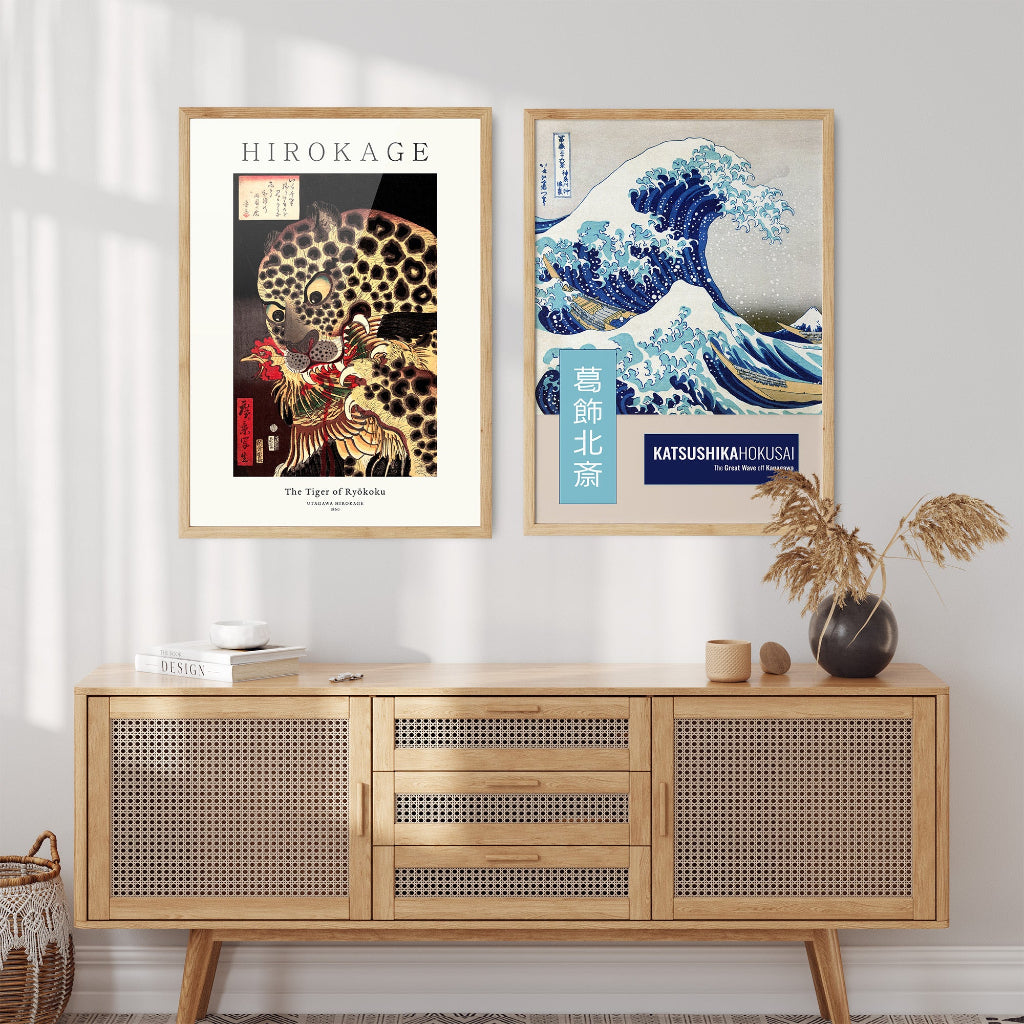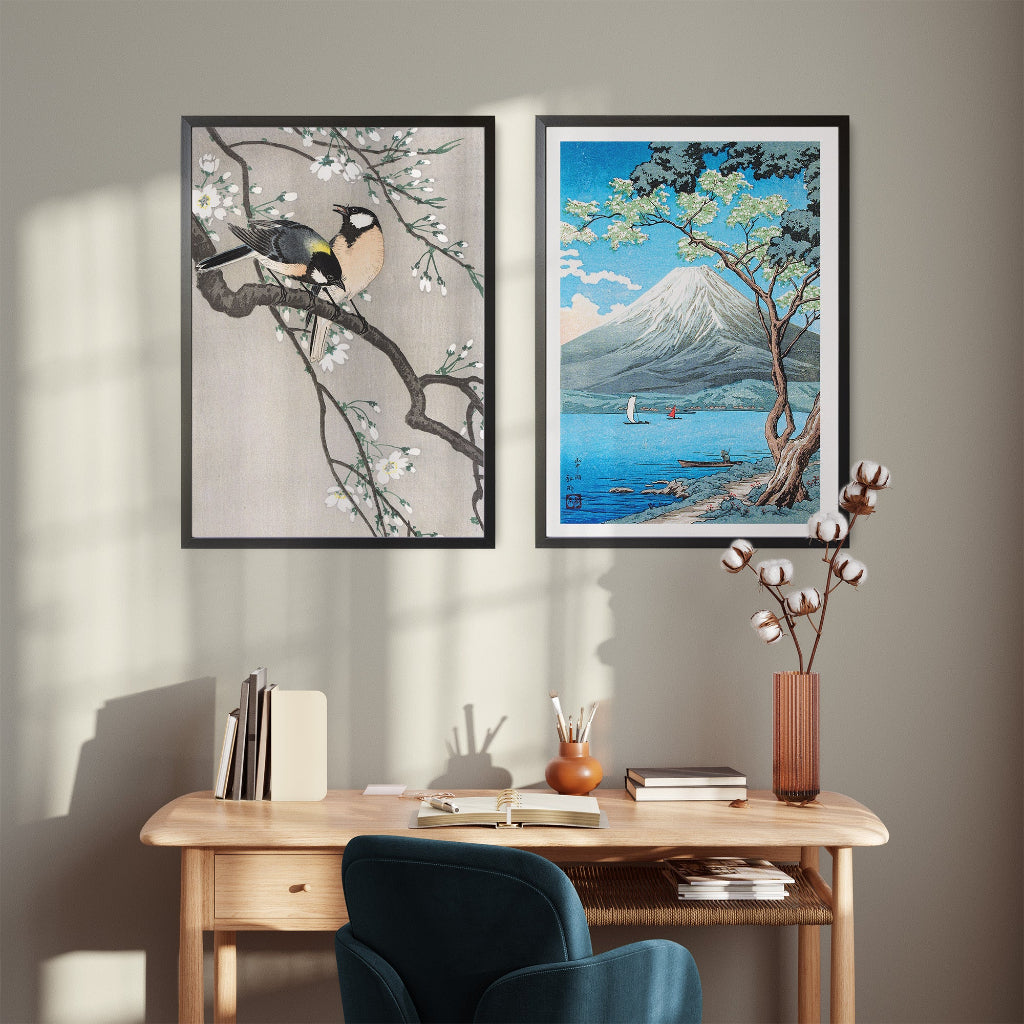
Utagawa Kuniyoshi, Self-portrait from the shunga album Chinpen shinkeibai, 1839
Utagawa Kuniyoshi (1798–1861) was one of the last great masters of Japanese Ukiyo-e woodblock prints and a leading figure of the Utagawa school.
Born in Edo (now Tokyo), he showed artistic talent from a young age and was accepted as a pupil by Utagawa Toyokuni I around 1811. Despite a slow start to his career, Kuniyoshi rose to prominence in the late 1820s with his dynamic and heroic warrior prints (musha-e). His breakthrough series was 'One Hundred and Eight Heroes of the Popular Suikoden All Told' (Tsūzoku Suikoden Gōketsu Hyakuhachinin no Hitori), which showcased his talent for dramatic compositions, powerful figures, and intricate details, particularly in depicting tattoos, which became highly fashionable partly due to these prints.
Kuniyoshi's artistic range was exceptionally broad. While he is best known for his warrior prints, he also excelled in depicting historical scenes, legends, mythical creatures (dragons, ghosts, giant spiders, and skeletons – his triptych 'Takiyasha the Witch and the Skeleton Spectre' is iconic), landscapes, beautiful women (bijin-ga), . . . Read More >>

Utagawa Kuniyoshi, Self-portrait from the shunga album Chinpen shinkeibai, 1839
Utagawa Kuniyoshi (1798–1861) was one of the last great masters of Japanese Ukiyo-e woodblock prints and a leading figure of the Utagawa school.
Born in Edo (now Tokyo), he showed artistic talent from a young age and was accepted as a pupil by Utagawa Toyokuni I around 1811. Despite a slow start to his career, Kuniyoshi rose to prominence in the late 1820s with his dynamic and heroic warrior prints (musha-e). His breakthrough series was 'One Hundred and Eight Heroes of the Popular Suikoden All Told' (Tsūzoku Suikoden Gōketsu Hyakuhachinin no Hitori), which showcased his talent for dramatic compositions, powerful figures, and intricate details, particularly in depicting tattoos, which became highly fashionable partly due to these prints.
Kuniyoshi's artistic range was exceptionally broad. While he is best known for his warrior prints, he also excelled in depicting historical scenes, legends, mythical creatures (dragons, ghosts, giant spiders, and skeletons – his triptych 'Takiyasha the Witch and the Skeleton Spectre' is iconic), landscapes, beautiful women (bijin-ga), actors (yakusha-e), and even humorous caricatures (giga-e). He was incredibly imaginative and often incorporated a sense of wonder, heroism, or the grotesque into his work. He was a master of triptych formats, creating large, complex scenes filled with action and detail.
Kuniyoshi was a contemporary of other leading Ukiyo-e artists like Utagawa Hiroshige and Utagawa Kunisada. While Hiroshige was famed for his poetic landscapes and Kunisada for his popular actor and bijin prints, Kuniyoshi carved out a niche with his powerful and often fantastical imagery.
He had a keen interest in Western art and incorporated elements of Western perspective and shading into his prints, yet his style remained distinctly Japanese. He was also known for his love of cats, which frequently appeared in his prints, sometimes as main subjects and other times hidden in witty details.
During periods of strict censorship (the Tenpō Reforms of the 1840s), which restricted prints of actors and courtesans, Kuniyoshi cleverly used historical or legendary subjects to allude to contemporary events or figures, or turned to overtly humorous and satirical designs. He was a highly influential teacher, and his students included Tsukioka Yoshitoshi, who would become the last great master of Ukiyo-e, and Utagawa Yoshiiku, among many others.
Kuniyoshi's legacy is that of a profoundly original and versatile artist who pushed the boundaries of Ukiyo-e with his powerful imagination, dramatic flair, and exceptional draughtsmanship. His work continues to inspire artists and fascinate audiences today.
If you want to know more about the artist: Utagawa Kuniyoshi - Wikipedia
<< Read Less
























